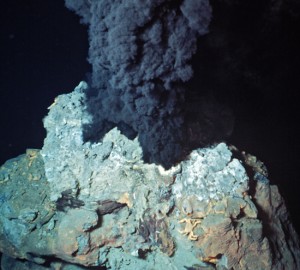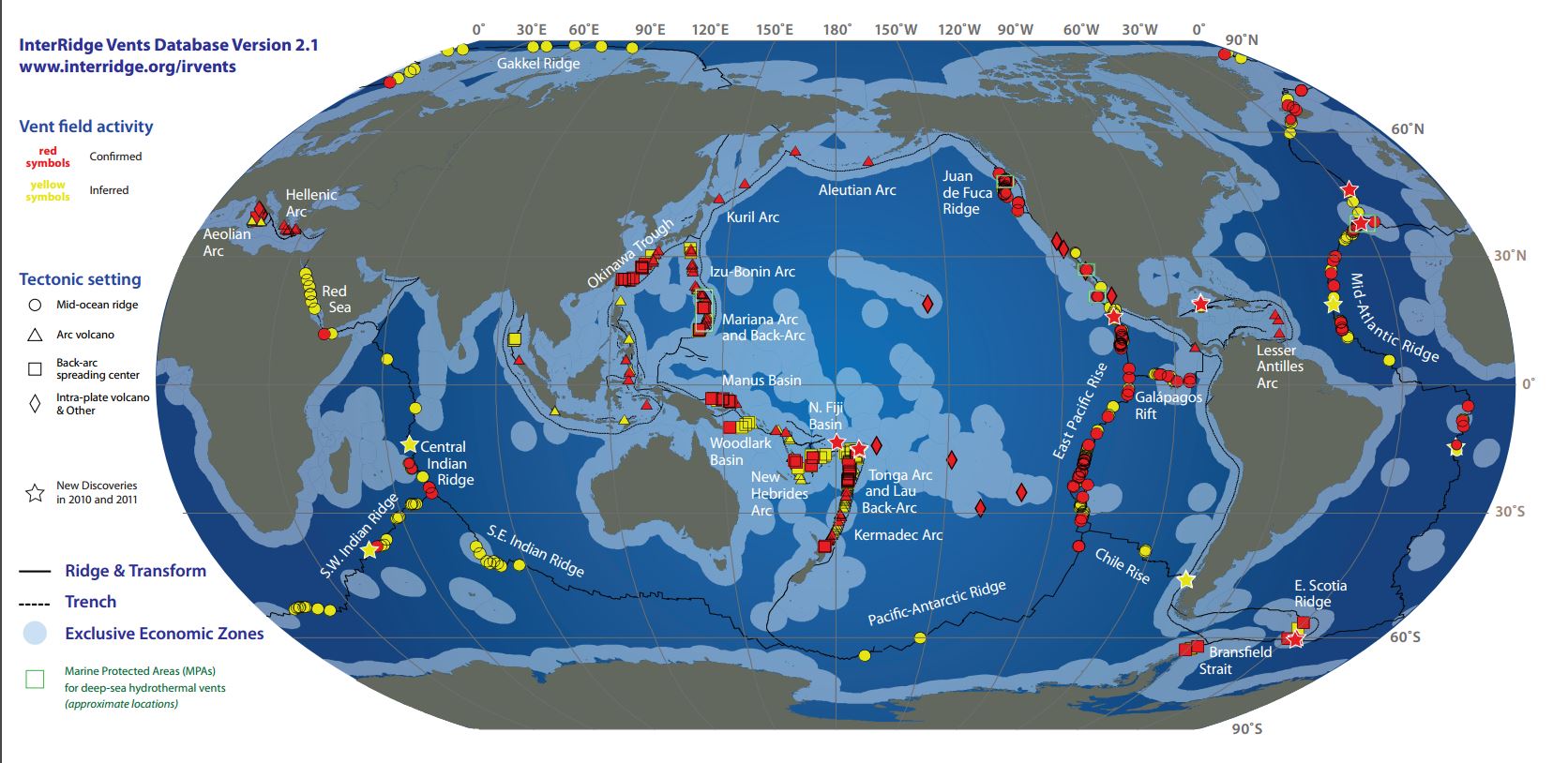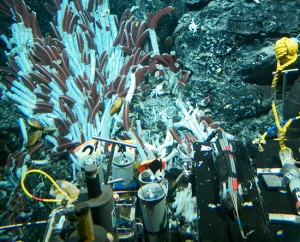Featured Stories, WHOI | February 26, 2016
Life in the Hot Seat
By Cassie Martin
This is the final article of a three-part series covering the Department of Earth, Atmospheric, and Planetary Sciences lectures on “Life in the Ocean.”

In 1977, scientists diving in the submersible vehicle Alvin off the coast of the Galapagos Islands made a startling discovery: deep fissures in the ocean floor spewing superheated, mineral-rich fluids. Surrounding the crevices were thriving communities of previously unknown organisms. Today, we recognize these creatures as giant tube worms, yeti crabs, clams, snails and various microbial species, to name a few. But how do these organisms survive in such extreme and isolated environments? Lauren Mullineaux, a senior scientists at Woods Hole Oceanographic Institution, provided some insights into the ecology of these bizarre ecosystems during the third and final lecture, “Hot Topics in Hydrothermal Vent Biology.”
Hydrothermal vents are areas in the sea floor where magma below the surface creates underwater volcanoes. They emit hydrogen, hydrogen sulfide, methane, carbon dioxide, and unusual trace metals that organisms use to produce energy in the absence of sunlight. Although vents are widespread, they are distributed intermittently along extended volcanic mountain chains called mid-ocean ridges. And because of the volcanic nature of these environments, they don’t last for long. Fortunately, the diverse communities that form around vents have evolved transient lifestyles to match their transient environments.

In 2006, WHOI researchers were investigating how larval populations dispersed from one vent to another when an unanticipated volcanic eruption gave them a rare opportunity. A series of eruptions on the East Pacific Rise—a mid-ocean ridge south of Mexico—wiped out well-studied vent communities, leaving researchers with a chance to observe how larval organisms initially colonize vents and what role dynamic ocean properties play in this process.
Mullineaux and colleagues found that species composition drastically changes after eruptions. In this case, the biggest surprise was the appearance of a species of sea snail whose closest known population was more than 200 miles away. Hydrodynamic jets that form along ridges are likely responsible for transporting species over such long distances, the team found. Other factors including jet physics and larval behavior also influence how far organisms travel.

Mullineaux’s team continues investigating modes of larval dispersal as well as community composition. Recent studies in collaboration with MIT Physical Oceanographer Glenn Flierl indicate swirling eddies in the surface ocean may impact sea floor biology and potentially serve as a conduit for vent-dwelling organisms.
Much of Mullineaux’s research is a combination of sampling and model simulations. Thanks to new technology, however, she will soon be able to get a closer look at the organisms that comprise her life’s work. Last year, WHOI successfully tested the SentrY Precision Robotic Impeller Driven (SyPRID) sampler—a new device designed to gently capture larvae without increasing drag on the autonomous underwater vehicles to which it’s attached. Access to intact specimens of common and rare deep ocean organisms will give researchers clearer insights into where larvae go and where they concentrate in the deep ocean. Mullineaux hopes to use the sampler later this year.
Mullineaux’s talk was the last in the MIT hosted lecture series “Life in the Ocean.” Scientists and educators at MIT and WHOI have collaborated for nearly a half century. Established in 1968, the MIT-WHOI Joint Program in Oceanography and Applied Ocean Sciences and Engineering provides students with access to resources and guidance at two world-class institutions and the opportunity to tackle some of today’s most pressing scientific and engineering questions. “Those of us [at WHOI] are really excited about strengthening ties between our institutions and making connections with both graduate and undergraduate MIT students,” she said. “This lecture series was a great opportunity.”






